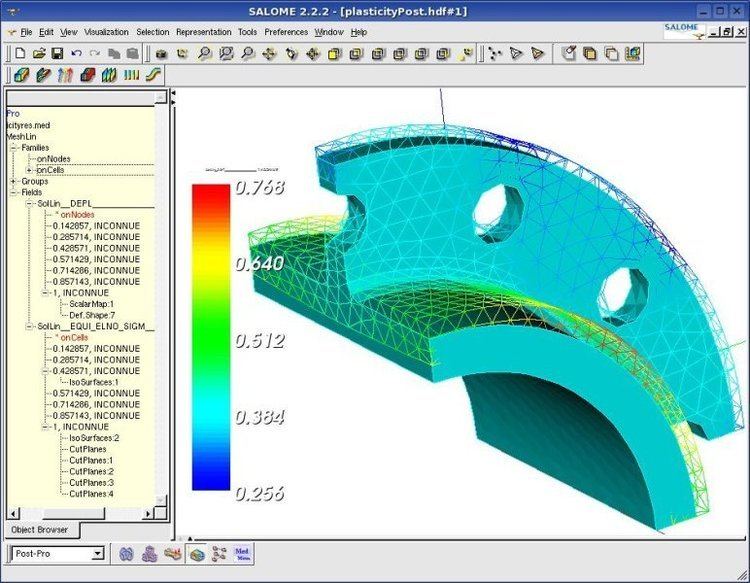 | ||
Computer-aided engineering (CAE) is the broad usage of computer software to aid in engineering analysis tasks. It includes finite element analysis (FEA), computational fluid dynamics (CFD), multibody dynamics (MBD), and optimization.
Contents
Overview
Software tools that have been developed to support these activities are considered CAE tools. CAE tools are being used, for example, to analyze the robustness and performance of components and assemblies. The term encompasses simulation, validation, and optimization of products and manufacturing tools. In the future, CAE systems will be major providers of information to help support design teams in decision making. Computer-aided engineering is used in many fields such as automotive, aviation, space, and shipbuilding industries.
In regard to information networks, CAE systems are individually considered a single node on a total information network and each node may interact with other nodes on the network.
CAE systems can provide support to businesses. This is achieved by the use of reference architectures and their ability to place information views on the business process. Reference architecture is the basis from which information model, especially product and manufacturing models.
The term CAE has also been used by some in the past to describe the use of computer technology within engineering in a broader sense than just engineering analysis. It was in this context that the term was coined by Jason Lemon, founder of SDRC in the late 1970s. This definition is however better known today by the terms CAx and PLM.
CAE fields and phases
CAE areas covered include:
In general, there are three phases in any computer-aided engineering task:
This cycle is iterated, often many times, either manually or with the use of commercial optimization software.
CAE in the automotive industry
CAE tools are very widely used in the automotive industry. In fact, their use has enabled the automakers to reduce product development cost and time while improving the safety, comfort, and durability of the vehicles they produce. The predictive capability of CAE tools has progressed to the point where much of the design verification is now done using computer simulations rather than physical prototype testing. CAE dependability is based upon all proper assumptions as inputs and must identify critical inputs (BJ). Even though there have been many advances in CAE, and it is widely used in the engineering field, physical testing is still a must. It is used for verification and model updating, to accurately define loads and boundary conditions and for final prototype sign-off.
The future of CAE in the product development process
Even though CAE has built a strong reputation as verification, troubleshooting and analysis tool, there is still a perception that sufficiently accurate results come rather late in the design cycle to really drive the design. This can expected to become a problem as modern products become ever more complex. They include smart systems, which leads to an increased need for multi-physics analysis including controls, and contain new lightweight materials, to which engineers are often less familiar. CAE software companies and manufacturers are constantly looking for tools and process improvements to change this situation. On the software side, they are constantly looking to develop more powerful solvers, better use computer resources and include engineering knowledge in pre- and post-processing. On the process side, they try to achieve a better alignment between 3D CAE, 1D System Simulation and physical testing. This should increase modeling realism and calculation speed. On top of that, they try to better integrate CAE in the overall product lifecycle management. In this way, they can connect product design with product use, which is an absolute must for smart products. Such an enhanced engineering process is also referred to as predictive engineering analytics.
